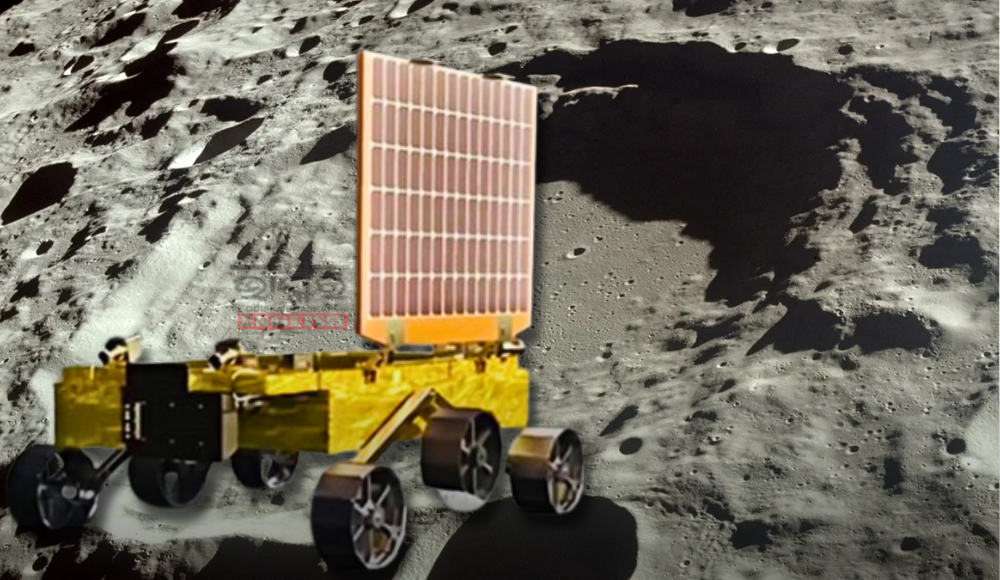The Indian Space Research Organisation’s (ISRO) Chandrayaan-3 mission has ignited fresh enthusiasm among science lovers with its latest discovery. The Pragyan rover has identified an ancient lunar crater, measuring 160 km in diameter, believed to be older than the South Pole-Aitken (SPA) basin, the moon’s largest and oldest impact feature.
Data from the Pragyan rover and Vikram lander, which completed their mission on September 3, 2023, has revealed crucial insights. Scientists at the Physical Research Laboratory (PRL) in Ahmedabad published their findings in a paper titled ‘Chandrayaan-3 Landing Site Evolution by South Pole-Aitken Basin and Other Impact Craters’. They noted that the Chandrayaan-3 landed on an ancient buried impact crater that predates the SPA basin itself.
Using high-resolution navigation and optical cameras, the Pragyan rover captured images of a “semi-circular, heavily degraded structure” near the landing site. This feature, one of the moon’s oldest geological structures, is largely obscured by debris from the SPA basin and surrounding areas. The discovery is significant for researchers worldwide, offering insights into lunar evolution and informing future missions, including the upcoming Chandrayaan-4, slated for 2027.
The crater’s age has resulted in substantial degradation, primarily due to later impacts, including those from the SPA basin. The images captured by the Pragyan rover are providing vital clues about the moon’s geological history, presenting a unique opportunity for scientists to study deeply buried lunar material.




Comments are closed.